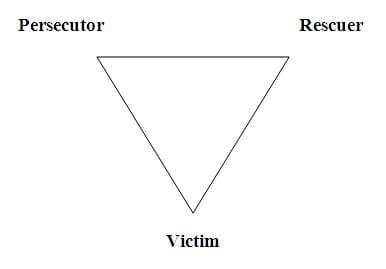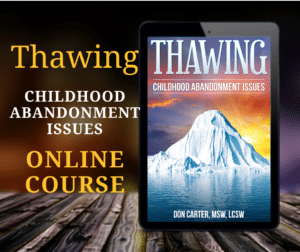
Conflict Resolution Tips
An article about conflict resolution tips must begin with an understanding of the survival skills and games that are played in dysfunctional families. If these are in play conflict resolution is not possible… all you can expect is an occasional cease-fire.
The word “dysfunctional” simply means “does not function properly”. Conflict resolution tips are essential in developing a well-functioning family system. This page is a listing of the most common reasons that cause families not to function properly… Click Here when you are ready to visit a page that outlines how to create a well-functioning family.
Conflict Resolution Tip #1 – Break the Rules
Dysfunctional family members learn several unwritten rules that perpetuate dysfunctional relationships. These rules are learned by experiences very early in life and become deeply embedded in the neural networks of how to relate to others:
- Don’t Talk
- “If I don’t talk about “it” then it won’t hurt and will go away”
- Fear of Abandonment
- Shame about what it going on
- Told not to talk about it
- Other family members role-model it by “ignoring” reality
- No one knows how to talk about it
- Don’t Trust
- Broken Promises
- Unpredictability
- Emotional Unavailability of the parents who are preoccupied with the problem or each other.
- Mutual Denial
- Parents discount the child’s reality – “Your father’s not drunk! He has the flu…Don’t you ever say that again!”
- Child develops their own system of denial to create a false sense of security.
- Don’t Feel
- Fear, Sadness, Anger, Guilt, Embarrassment, Loneliness
- Build walls to protect against these feelings (See Survival Roles below)
- “Numbing Out” creates physical, emotional and psychological safety
Breaking these unspoken and unwritten rules are the number one conflict resolution tip for a reason — these rules are in place to protect and encourage dysfunctional patterns in relationships.
Conflict Resolution Tip #2 – Take Off the Mask
The following is a list of the Survival Roles or “Masks” that children learn as a way to survive not getting their needs met:
Hero:
This child never feels “good enough”. They become a “human doing” instead of a human being. They are out to prove their worth but never do to their own satisfaction. There are two types of Heroes:
- The Flashy One: The class president, straight A student, captain of the football team, and valedictorian.
- The Responsible One: The 10 or 12-year-old who comes home after school, get the mail, washes the dishes, clean up the house, and cares for the younger children. This is the “behind-the-scenes-hero.
Heroes seek attention and recognition but can never get enough. They tend to become workaholics, over-achievers, and so-called type-A personalities. They live in fear that they are going to be “found out” as frauds by others.
Rebel/Scapegoat:
This child learns to get attention through misbehavior. They get time, attention, affection, and direction from teachers, principals, counselors, and juvenile officers who are all trying to manage their behavior. Unconsciously, the rebel understands that negative strokes are better than no strokes at all.
People Pleaser:
This child is prone to approval-seeking behavior. They fear abandonment and rejection if they say “no” and so developed difficulty setting boundaries.
Placater:
It is the job of this child to help the family avoid conflict by heading off trouble and making sure others don-t make waves. This role and the People Pleaser may also be the Lost Child. It is not unusual for middle children to take on several roles or all of the roles at different times in the life of the family.
Lost Child:
This child uses fantasy to get time, attention, affection, and direction. They may have a favorite doll that they play mother to; vicariously getting their own needs met.
They may also lose themselves in comic books, novels, television, video games, and imaginary friends to name a few distractions. This child brings relief to the family because they’re known as the one they never have to worry about. They are always around somewhere would never make any noise.
The Intellectualizer/Rationalizer:
A.K.A., the Computer, This child learns to say out of their emotions by staying in the thinking or left brain to “figure things out.”
While this is an attempt to protect themselves from feeling their painful emotions, it usually backfires because they end up attracting, and being attracted to, people who freely express those same painful emotions. These people “trigger” the intellectualizer into reluctantly experiencing their blocked emotions.
The Mascot:
The baby of the family… usually preoccupied with humor or being cute. This child gets a lot of time, attention, affection, and direction for the cute and funny things babies do. They learn to stay “on stage” and become the class clown or the beauty queen. The silliness of this child can continue into adulthood to an embarrassing degree.
Conflict Resolution Tip #3 – Stop Dancing!
The Drama Triangle is a game I refer to as the Dance of Externalization because this particular pattern of behavior is ideal for keeping an external focus as well as acting-out (or externalizing) emotional themes of abandonment, shame, and contempt.
Having someone or something else to focus on outside of me keeps me from having to experience the pain being carried inside of me.
What better external focus for a codependent than a problem spouse such as an alcoholic or gambling addict. Since I cannot directly express my own abandonment, shame, and contempt I must indirectly express it through acting-out. Conflict resolution tips are of no use in maintaining an external focus.
Acting-out allows me to remain largely unconscious or unaware of the roots of my behavior. If I were to be aware of it I would not only have to experience the pain, I would also have to do something about it.
Conflict Resolution Tip #4 – Understand The Drama Triangle
The Drama Triangle requires two to three players – a victim… a persecutor… and a rescuer. As we explore this dynamic of the dysfunctional family, it’s important to keep in mind that there are such things as genuine victims, genuine persecutors, and genuine rescuers.
A genuine victim might be someone involved in a motor vehicle accident, the genuine rescuer would be the EMT on the scene to treat the victim, and a genuine persecutor would be the lawyer in charge of prosecuting the case of the drunk driver who caused the accident.
Children who were abused or neglected are also true victims… people who come to the aid of such children are true rescuers… and members of the legal system are true persecutors. When children grow up in a dysfunctional family, they initially are genuine victims… However, they develop pseudo-victim behaviors via neural networks as a result of being exposed to those dynamics.
Hero children in such families often times develop rescuing behaviors/networks… Rebel children sometimes develop persecuting behaviors/networks…Lost children may become victims in an abusive or oppressive relationship. These patterns of behaviors are modeled, encouraged, and/or reinforced by other members of the family. They are also behaviors that are handed down from one generation to the next.
New networks have to be established and reinforced over a period of time in order to take hold. The alternative to the Drama Triangle is true intimacy which requires self-awareness and the ability to focus inward.

Conflict Resolution Tip #5 – Identify Your Part in the Drama
The Victim:
This family member gets their needs met by having other people take care of them. They always blame someone or something else for what’s wrong with their lives and play the “why don’t you, yes but” game or the “I can’t do that” game.
The Rescuer:
This family member needs to be needed and so they attach themselves to a victim. Rescuers frequently notice that others always come to them with their problems and don’t know why they do that. Having a needy person or victim to take care of is perfect for keeping an external focus and avoiding one’s own issues.
The rescuer helps keep the victim dependent on them by playing into their Victimhood and doing everything for that person rather than teaching them how to do it themselves.
The Persecutor/Blamer:
This family member externalizes their hostility and contempt through shameless and blameless behavior. They are intrusive, blow up, rage at others and can even be abusive because they believe something along the lines of “If all these other stupid people would do things my way the world would be a much better place” when they are in this state.
Again, family member’s can, and often do, engage in switching roles — this is where the “drama” comes from in the Drama Triangle. For more conflict resolution tips learn about The Drama Triangle — Once there you will find links to several more related pages (at the bottom of the page).
Generally speaking, one member of the family may be assigned the role of victim (usually a child), another the role of rescuer, while another takes the role of persecutor.
- The Victim doesn’t get a household chore completed
- The Persecutor blows up at the victim for not doing his part
- The Rescuer jumps in and makes excuses for the victim
- The Persecutor feels victimized by the Rescuer and begins to pout
- The Victim rescues the Persecutor by persecuting the Rescuer
- The Rescuer feels victimized by the Victim and begins to persecute
- Etc., etc., etc
However, part of the game is the ability to shift from one role to another. Many times all members of the family are equally adept at playing each of the roles.
Conflict Resolution Tip #6 – Break Out of the Drama Triangle
The object of this game is to maintain the status quo or familiar balance in the family system. This is accomplished because none of the players ever have to “go inside” to address their own issues – this is also how they maintain their external focus.
Furthermore, none of the players get to learn the tools necessary for healthy intimacy. When they go out into the world they must find a mate that knows how to play this game – The Drama Triangle becomes part of their map of the world.
The result of that is to get stuck in the same old patterns of acting-out their emotional themes of abandonment, shame, and contempt with someone who also knows this dance of externalization.
Conflict Resolution Tip #7 – Learn a New Dance
If these patterns are familiar to you then the only way to learn how to resolve conflicts in your intimate relationships is to learn the dance of Intimacy… For that, you must heal from your past and find your True Self. True intimacy is having the ability to share your True Self with another person who can also share who they really are with you. Conflicts almost resolve themselves if you can do that.






